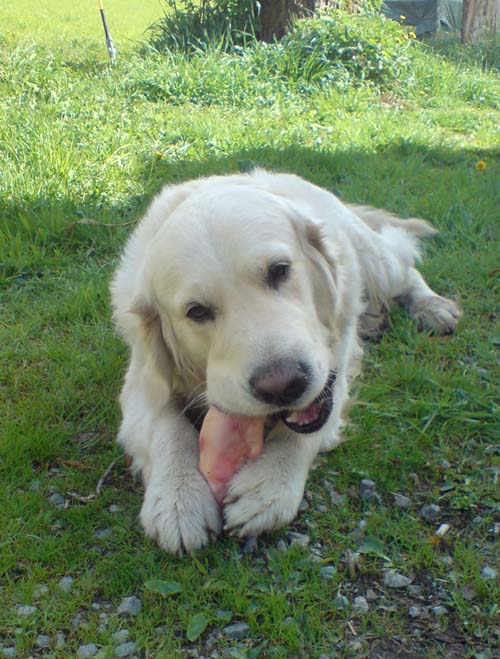The hunting instincts that drove their ancestors are plain to see in the domesticated dogs of today. Running after tennis balls brings back the thrill of the chase, but meal times are far from exciting. All most dogs look forward to is a bag of dog food with processed pellets poured into a bowl. A raw food diet for dogs is unprocessed and healthy – if you do it correctly.

The trend has divided pet experts, with some coming down strongly in favour of a raw food diet and others advising against it. As with most matters, you should always consider both sides of the argument before making an informed decision.
Cons of a Raw Food Diet for Dogs
According to some vets, there’s a higher risk of bacterial contamination from raw meat, with E. coli and Salmonella being the prime culprits. The U.S. Food and Drug Administration even issued a statement warning that “raw pet food was more likely to be contaminated with disease-causing bacteria.”
Furthermore, not all veterinarians are convinced of the nutritional benefits of a raw food diet for dogs. Veterinarian Danny Joffe, from the Calgary Animal Referral and Emergency Centre, has concerns that raw dog food is not nutritionally balanced compared to premium dog food brands designed to provide optimal nutrition.
Some veterinarians contend that sedentary dogs are less likely to benefit from a raw dog food diet, as their bodies don’t process nutrients as effectively as active dogs.
Finally, dogs are still fed raw food in a bowl instead of scavenging for it. The food may be more natural, but they aren’t getting other benefits, like mental and sensory stimulation.
Pros of a Raw Food Diet for Dogs
Those in favor of the raw food diet believe that dogs’ metabolic systems are better geared towards raw foods than dry kibble and processed wet food. Commercial food contains an excess of ‘filler’ ingredients, like grain and corn. Fillers aren’t as nutritious as animal products, and can cause allergic reactions in sensitive dogs.
Whole raw foods, on the other hand, haven’t been processed and are highly nutritious.
The health advantages of a raw food diet include:
- Healthier skin and shinier coat
- Improved energy levels
- Improved digestion
- Cleaner teeth
- Reduced allergies
- Weight management
- Management of illnesses like pancreatitis, cancer and kidney problems
Another advantage is that dogs love the taste. Well, most dogs. Their dinner bowls will practically gleam because they’ve been licked so clean.
Suggestions for a Raw Food Diet

Highly nutritious raw vegetables include:
- Carrots
- Lettuce
- Fresh corn
- Bell peppers
- Alfalfa sprouts
While the following vegetables should be avoided:
- Onions
- Rhubarb
- Spinach
- Swiss chard
Dog Food Advisor has a comprehensive list of recommended raw dog food brands. It’s best to transition to raw dog food gradually by adding a little bit to your dog’s regular food over 2 to 4 weeks.
It goes without saying that you should closely monitor your pet’s reaction to a raw dog food diet. Bring any changes in behavior or habits to the attention of a veterinarian immediately. Also consult with your veterinarian regarding any health issues your pet may have that could affect his response to raw dog food.
Note: You will be handling raw meat, including the bones, organs and feet of different animals, including cows, sheep, chicken and venison. You have to reconcile yourself to that and not be squeamish before you start giving over freezer space to your dog’s food.

Comments